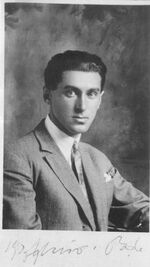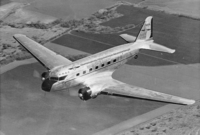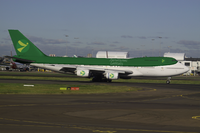Letitalis
This article is incomplete because it is pending further input from participants, or it is a work-in-progress by one author. Please comment on this article's talk page to share your input, comments and questions. Note: To contribute to this article, you may need to seek help from the author(s) of this page. |
 | |||||||
| |||||||
| Founded | 10 June 1919; 102 years ago | ||||||
|---|---|---|---|---|---|---|---|
| Hubs | Polácica Despotović International Airport | ||||||
| Frequent-flyer program | Green Flyer | ||||||
| Alliance | FlyingHigher | ||||||
| Subsidiaries | Letitalis Cargo Letitalis Cityflyer | ||||||
| Fleet size | 192 | ||||||
| Destinations | 169 | ||||||
| Headquarters | Polácica, Kentalis | ||||||
| Key people | Višeslav Lazarević (Founder) Lješ Nešić (CEO) | ||||||
| Revenue | ᕋ14.73 billion (2021) | ||||||
| Operating income | ᕋ1.06 billion (2021) | ||||||
| Website | Letitalis.kt | ||||||
Letitalis, oficially Letitalis - Kentalian National Airline is the flag carrier airline of Kentalis. It is headquartered in Polácica, with its hub at Polácica Despotović International Airport. It is a founding member of the FlyingHigher airline alliance. It is the oldest still operating airline of Anteria, founded in 1919 as Kentalian National Airline. It has 51,638 employees as of 2021, and has a fleet of 192 planes and 169 regulary scheduled destinations for both passenger and cargo services.
History
Early years
In March of 1919, interest in airlines started to grow in Kentalis after it was proven that aviation had a place besides airships during the Great War. This interest in aviation technologies accumulated in the first AeroExpo Aviation exhibition on a grass field on the outskirts of Polácica. There, Višeslav Lazarević, an aviator and veteran of the Great war, lobbied for the creation of a Kentalian airline. After the exhibition was closed, several private companies nominated Lazarević for heading the establishment of an airline, which was eventually accepted by the government. On the 10th of June 1919, Lazarević and twelve other businessmen founded Kentalianski Nacionalnim Aviolinija, the first airline of Kentalis, which was abbreviated to KNA.
The first flight took place on the 30th of November 1919 and was a retour flight between Polácica and Apačin. The flight was flown by a converted Kentalian army cargo plane, registered as K-DKS, and carried a pair of journalists of the Polácica Pregled, the Mayor of Polácica and a fruit basket. In 1920, KNA carried approximately 500 passengers and 30 tonnes of cargo and freight across the Požanovac peninsula. Starting in late 1920, KNA started scheduled flights towards Apačin, Koderevo and Živislavgrad, and by 1921 this had extended to international flights to then-independent Arakovac, Moldanovica, Torvon and the Canterian federation using Markavar M.3 and Markavar M.4 planes.
By 1923, KNA offered flights across Thuadia, with Kavlat, Kandan and Neuhamlet all being serviced on long routes. In July of 1923, KNA’s first intercontinental flight to Thrismari took off towards Gassasinia, with longer flights into Thrismari being offered soon later. KNA was the first airline to offer Pan-Paisi flights, with the first of such being the flight to Riamo via Gassasinia in 1927, which at that time was the longest scheduled route by plane of Anteria. In 1927, KNA’s name was changed to Kentalianski Nacionalnim Aviokompanija, still abbreviated to KNA. In 1932, KNA carried more than 25,000 passengers. During the 1930s, many of the older Markavar planes started being replaced by more recent models, such as the HR 4, which at that time became an iconic staple of the KNA’s fleet. In 1941, the KNA was rebranded to the KNAK. By the late 1940s, the airline offered flights to Thuadia, Thrismari, Astirax and Olivacia. In 1948, its logo was changed once more, featuring the iconic modern Letitalis logo for the first time.
During the early 1950s, KNAK’s profits started decreasing due to increasing tensions within Kentalis itself, so as an attempt to remarket itself and as an attempt to lure in more travellers, it started investing in new planes, which for the first time included jetliners.
Civil war
The outbreak of the civil war in 1958 heavily restricted the KNAK’s operations, with most flights towards Kentalis itself, with the exception of the island of Hrastmož, being cancelled, and all the foreign ones being heavily limited, though often flown under code-sharing flights. Domestic flights were limited too, as it was oftentimes risky to fly over the front without being mistaken for an enemy plane. As such, flights towards Ereskan areas were completely cancelled, while flights into Stratocratic areas were restricted heavily. The only flights that remained intact still had their routes altered, increasing their travel times dramatically. On 16 August 1959, TK-AKO, a KNAK HR 7 operating on a flight between Polácica and Câče, was shot down over Koderevo by Stratocracy forces, killing all 52 passengers and crew aboard.
Post-war recovery

After the end of the civil war in April of 1962, KNAK moved to repair its routes. This was faced with difficult financial times for the airline, which moved to replace its propeller-driven fleet with Riamese-built jet planes. Thanks to multiple grants from the Kentalian government, the airline survived the financial difficulties. In 1965, the new president of the airline, Vladislav Andrić, moved to rebrand it. On 4 May, KNAK was rebranded to Letitalis, which was a drastic and controversial move. By 1966, the airline started to make profits once more, and by 1968 it was able to repay its grants to the Kentalian government.
Late twentieth century
By 1971, Letitalis carried more than 15 million passengers and started to face under-capacity. To counter it, Letitalis invested in wide-body planes, including the Loxpool L-10. In 1973, Polácica Despotović Airport finished its 7-year long refurbishment, which allowed Letitalis to schedule more flights from its hub. The amounts of flights offered increased rapidly as Letitalis moved to rapidly expand, in an attempt to offset the losses which it gained during the civil war. In 1975, Letitalis once more was facing financial difficulties, and had to sell 30% of its shares to the Kentalian government, which already owned 23% of the company, giving it a 53% stake in Letitalis. Vladislav Andrić retired as Letitalis president that year, and was replaced with Dalibor Brđanin. Letitalis still continued to grow in the 1970s, investing heavily in its wide-body long-range fleet. In 1980, Letitalis carried 27 million passengers, reflecting the heavy growth which the airline had undertaken in that decade.
Letitalis reached an agreement with Loxpool in 1981 to upgrade the L-10s that it had bought to be more fuel-efficient, introducing the L-10EE. In 1983, the mid-ranged fleet was fully replaced by Bakyernian-manufactured airplanes, with those being narrow-body planes. During the same year, the short-ranged fleet was handed over to the Letitalis Cityflyer subsidiary, while the cargo fleet was transferred to Letitalis Cargo. Dalibor Brđanin died in a car crash in 1985, and was replaced by Vukašin Popadić. Letitalis repurchased all regular shares from the Kentalian government in 1989 to make Letitalis a private company again.
In 1990 Letitalis was the first Thuadian airline to introduce a frequent flyer program, Green Flyer. In 1995, Letitalis moved to retire the oldest planes of its fleet. Letitalis fully replaced the intercontinental fleet in 1998, replacing the Loxpool L-10EEs with Loxpool L-132s, which first entered service in 2003. Letitalis, together with two other airlines founded the Flying Higher Airline alliance, one of the largest alliances of Anteria, in 1999.
Twenty-first century
By 2003, Letitalis found itself competing with other budget airlines and the KNŽK, the national railway company, on domestic flights. The KNŽK was able to compete due to the opening of the Polácica-Koderevo and Koderevo-Apačin high-speed lines, whose tickets were usually cheaper than flying. Letitalis officially cancelled all flights between Polácica, Koderevo and Apačin in 2004, abandoning its first route due to pressure from the High-Speed Rail Network. Letitalis refocussed, and limited its domestic flights to Polácica-Smevo, Polácica-Živislavgrad, Živislavgrad-Apačin, Polácica-Žacevica and Živislavgrad-Žacevica. In 2005, then-president Darko Novaković retired due to health issues and was replaced by Lješ Nešić, who still is the president of the airline to this day. In 2019 Letitalis celebrated its centennial, as it was founded in 1919, becoming the first Anterian airline to achieve such a feat.


